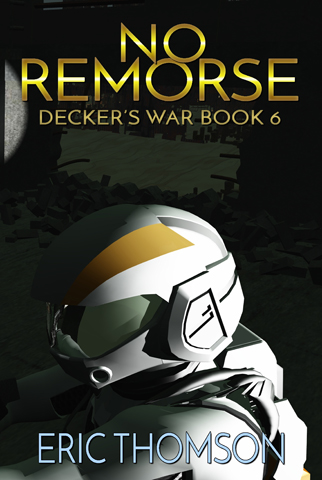I’m halfway done with my latest project, We Dare (Ghost Squadron No. 1) and so far, so good. If the stars align and my editor can pounce on it the moment I’m done, it might even be out in time for Christmas. And since my experiment with making the sixth Siobhan Dunmoore book available for pre-order worked so well, I will likely do the same for this one. I’ve pretty much settled on the cover design, as you can see:

What’s the story line? Here’s the current iteration of the text you’ll eventually find on the book’s product page, on the back of the paperback version and the front inside flap of the hardcover version:
The Marines of “A” Squadron, 1st Special Forces Regiment, also known as Ghost Squadron because it strikes unseen and vanishes without a trace, are humanity’s foremost black ops specialists. They will do whatever is required to protect humanity anywhere in the known galaxy. With the Commonwealth increasingly unstable thanks to venal politicians, greedy financiers, and power-hungry revolutionaries, they don’t lack for missions.
When an undercover Constabulary officer vanishes after uncovering a massive cartel-run human trafficking operation, the Commonwealth’s interstellar police force calls for help from the Armed Services. Because the cartel’s operations could upend the delicate political balance between the older core worlds and the more recently colonized outer star systems, Ghost Squadron gets the job. Its mission: find the missing Constabulary officer and choke off the growing slave trade bedeviling humanity’s perilous galactic frontier.
Ghost Squadron’s commanding officer, Lieutenant Colonel Zachary Thomas Decker, spent the last ten years as a naval intelligence agent. His job was thwarting plots and terminating the Commonwealth’s internal enemies alongside his partner, a trained assassin. Now, with several hundred of the deadliest Marines ever fielded at his back, Zack Decker is about to change the course of history.




























Aloha, Eric:
Looking forward to a new series, but those of us military experience will be scratching our heads with your terminology. I was an Air Force captain & combat pilot in Vietnam, & have a pretty good idea of military unit sizes, & the command structure. The problem with using “Ghost Squadron” is that a squadron is typically from 6-60 individuals, & is commanded by, at most, a second lieutenant. If you have a lieutenant colonel as commander, your book should be entitled “Ghost Battalion” which would be 100-1000 individuals. Hope this doesn’t screw anything up.
Ken Goldstein, Ph.D. ***************************
Hi Ken,
I’m using ‘squadron’ in the cavalry sense, which in the US Army (and some other armies) is a battalion-sized unit. For example: https://en.wikipedia.org/wiki/2nd_Cavalry_Regiment_%28United_States%29#Current_structure
Ghost Squadron is made up of three Special Forces companies and has a strength of roughly 350 troopers.
Cheers
Eric
Looking forward to it! BTW I’m retired USAF and was a Tactical Air Control Party member supporting 1st Squadron 2nd Armored Cavalry Regiment in 1974-78. In the cavalry, companies are designated “troops” so the 2nd ACR had three squadrons consisting of four troops each. It also had a combat engineer unit and an aviation unit attached.
The structure of the 2ACR was slightly different than the current one you linked. In the ‘70s the troops just used their letter (Alpha, Bravo, etc) and the engineer unit was the 84th Engineer Company. Of course the squadrons were much larger than Ghost Squadron as the entire regiment was closer to a light brigade.
Too bad I can’t pre-order now!